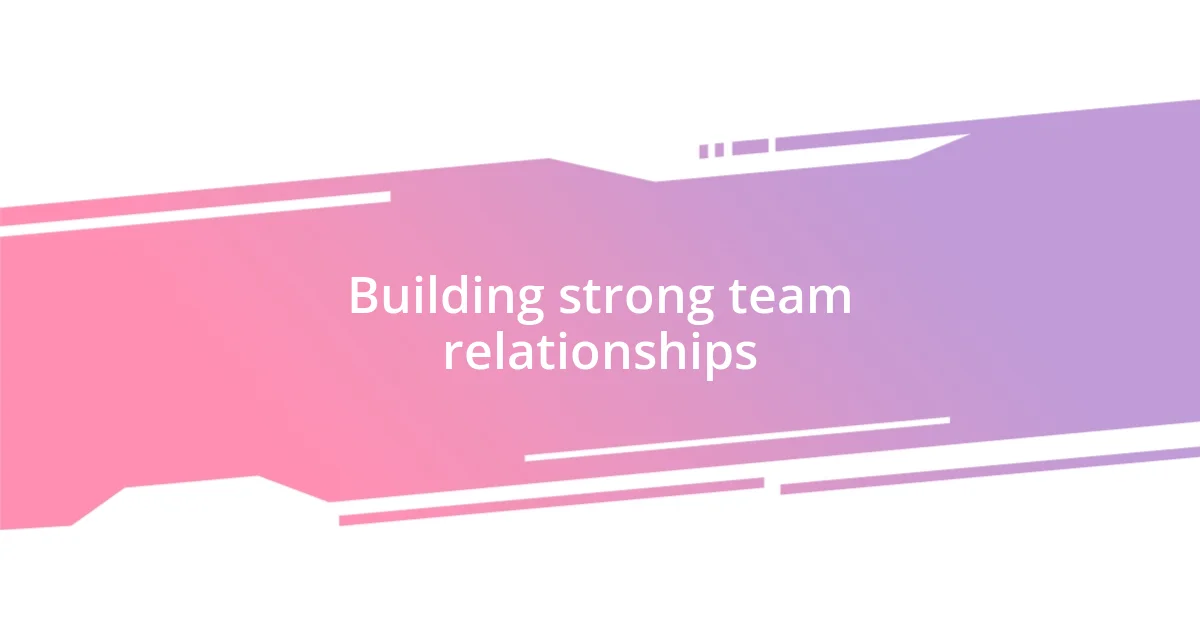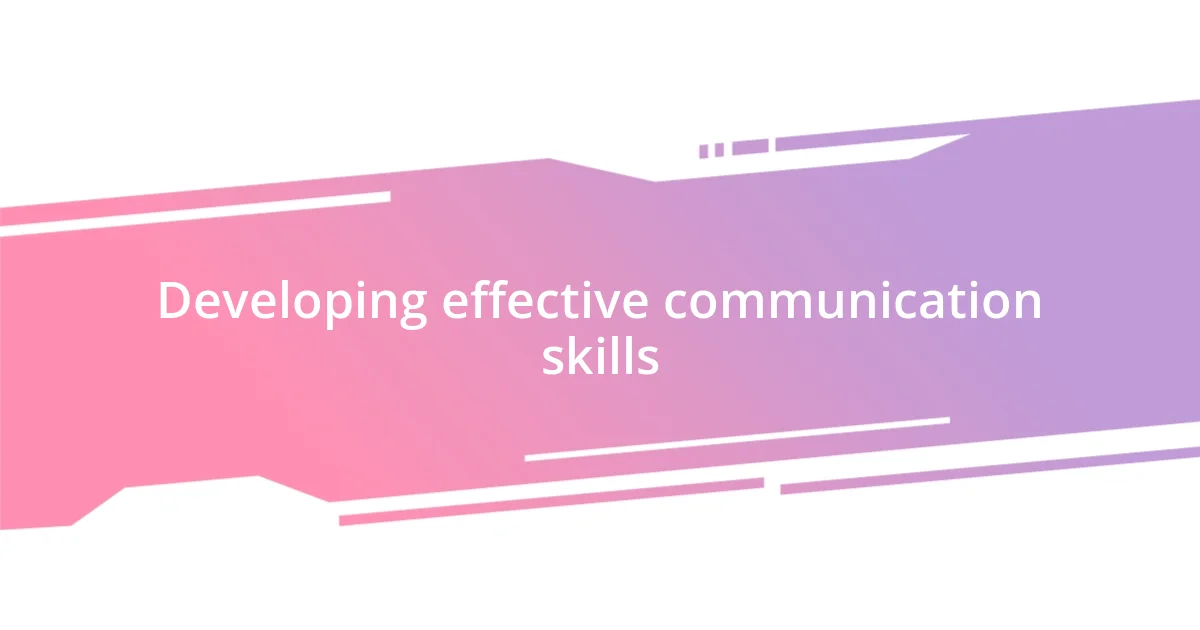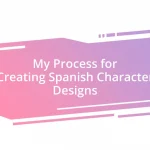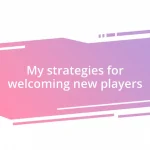Key takeaways:
- Guild leadership fosters community connections and enhances personal growth through decision-making and public speaking experiences.
- Effective communication and empathy are vital in resolving conflicts and creating strong team relationships within the guild.
- Collaboration and adaptability are crucial for strategic decision-making, allowing teams to learn from setbacks and cultivate resilience.

Understanding guild leadership benefits
Stepping into a guild leadership role opened my eyes to the power of community. I remember the first time I organized a game night; seeing members connect and share their stories left me with an overwhelming sense of fulfillment. Isn’t it incredible how fostering those connections can lead to growth for not just the guild, but for each individual member?
One of the standout benefits of guild leadership for me has been the development of critical decision-making skills. When faced with making choices that impact the group, I often had to weigh various perspectives. It was like trying to solve a puzzle with many pieces—each member’s input was vital, and navigating that made me more empathetic and thoughtful. Doesn’t it feel rewarding when you see the positive impact of your decisions reflected in the guild’s overall atmosphere?
Additionally, I’ve noticed that being a leader often pushes you out of your comfort zone. I initially felt nervous about public speaking, but leading meetings gradually built my confidence. Have you ever faced a challenge that, once overcome, changed your perspective completely? That’s precisely what guild leadership did for me—it transformed not just how I interact within the group, but how I approach challenges in life.

Building strong team relationships
Building strong relationships within a guild is invaluable. I recall a time when a member faced personal challenges and felt isolated. I reached out, just to check in, and our conversation opened a door to deeper connections among the team. It was remarkable to see how those simple gestures led to a supportive network, allowing everyone to feel more included.
Here’s what I’ve learned about fostering strong relationships:
- Open Communication: Encourage members to share their thoughts and feelings regularly.
- Recognize Achievements: Celebrate successes, no matter how small, to build morale.
- Team Activities: Organizing casual get-togethers can strengthen bonds outside of game mechanics.
- Be Approachable: Let members know they can reach out without hesitation.
- Foster Inclusivity: Create an environment where everyone feels valued and heard.
These practices have transformed our guild into a close-knit community, reflecting how crucial strong relationships can be in any group dynamic.

Developing effective communication skills
Developing effective communication skills has been a game changer for me in my guild leadership journey. I vividly remember the first time I had to mediate a disagreement between two members. I realized that simply relaying information wasn’t enough; I had to listen actively and understand their perspectives. This experience taught me that effective communication is as much about listening as it is about speaking. Have you ever felt that moment when everything just clicks? That’s how I felt, and it highlighted the importance of empathy in our interactions.
As I continued to lead, I found that the manner in which I communicated influenced the guild’s dynamics significantly. For instance, establishing a clear and open channel for feedback made everyone feel more comfortable sharing their thoughts. I encouraged members to voice their opinions during meetings, which led to richer discussions and a more vibrant community. It’s fascinating how a few simple strategies can lead to profound changes in group dynamics, isn’t it? This open communication not only resolved conflicts but also nurtured relationships built on trust.
Lastly, I’ve learned that tailoring my communication style to different situations is crucial. Whether it’s using humor to lighten a tense moment or being serious when discussing a critical issue, adjusting my approach has proven effective. I recall a time when I had to address a particularly sensitive topic and chose my words carefully. The positive response from the guild affirmed my belief in the power of thoughtful communication. Each instance has been a step in honing my skills, making me a more effective leader.
| Communication Strategy | Description |
|---|---|
| Active Listening | Engaping fully with others, understanding their viewpoints before responding. |
| Open Feedback Channels | Creating opportunities for members to express their thoughts and concerns freely. |
| Adapting Communication Style | Tailoring conversation techniques to fit the audience and situation context. |

Enhancing conflict resolution abilities
Navigating conflicts within the guild has been both a challenge and a revelation for me. I recall an intense moment when two members clashed over strategy. Instead of stepping in with solutions, I invited them to a private chat. This approach encouraged them to articulate their frustrations and, surprisingly, they ended up discovering common ground themselves. Isn’t it fascinating how giving space for dialogue can transform conflict into collaboration?
As I reflected on such situations, I recognized that conflict resolution isn’t merely about finding a quick fix. It’s often about facilitating understanding. I remember a time when I held a meeting specifically focused on addressing lingering tensions. By allowing members to voice their feelings openly, I created an environment where emotions were validated. Witnessing the relief on their faces as they spoke their truths was a powerful reminder of how cathartic conflict resolution can be.
Ultimately, I believe the heart of effective conflict resolution lies in remaining neutral yet compassionate. I think back to a critical moment when I had to mediate a disagreement; my role shifted from being a leader to being a supporter. By encouraging both parties to express their side while reminding them of our shared goals, I helped steer the conversation toward a positive outcome. Have you ever experienced that moment when clarity emerges from chaos? It’s moments like these that define not just my role as a leader, but also shape the guild into a resilient community.

Fostering a culture of collaboration
Fostering a culture of collaboration has been eye-opening for me. Early in my leadership, I noticed how sharing responsibilities ignited a sense of ownership among members. I encouraged everyone to take lead roles on different projects, which surprised me with its impact. Have you ever seen a team thrive simply because you let them shine? It’s incredible how empowering others creates a ripple effect of enthusiasm and creativity.
One memorable moment was when we had an upcoming event and needed fresh ideas. Instead of pouring over plans myself, I hosted a brainstorming session. The energy in the room was palpable as members bounced ideas off one another. Seeing them build on each other’s thoughts made me appreciate the collective creativity. Collaboration isn’t just about teamwork; it’s about fostering a space where everyone feels their input matters. When have you felt your opinion truly valued? In those moments, productivity soars, and bonds deepen.
Ultimately, I’ve learned that collaboration is nurtured through shared experiences. I set up team-building activities that weren’t just fun but also highlighted our strengths and areas for improvement. I recall a day out where we faced challenges together, and I was amazed at how quickly we bonded through overcoming obstacles as a unit. It’s moments like these that reinforce trust and understanding. Have you ever been part of a group where teamwork became second nature? That’s the kind of culture I strive to cultivate—one where collaboration is an integral part of our identity, not just a means to an end.

Learning strategic decision making
Learning strategic decision-making has been a pivotal part of my journey in guild leadership. I remember grappling with a major decision about event logistics—should we maximize participation by simplifying the event, or create a more immersive experience that might limit attendance? Instead of rushing, I gathered input from the team. This collaborative approach not only illuminated diverse perspectives but also strengthened our collective ownership over the decision. Have you ever paused to weigh your options, only to find clarity in the voices around you?
One critical lesson I picked up is that strategic decision-making often comes down to risk assessment. During one planning session, I proposed a bold idea for expanding our guild’s outreach. As we dissected the pros and cons, I realized how key it was to balance ambition with practicality. Listening to concerns from quieter members reminded me of the value in those less vocal voices. Have you noticed how, sometimes, the most thoughtful insights come from those who prefer to observe rather than dominate conversations?
Another fundamental aspect I’ve learned is the importance of adaptability. There was a time when I implemented a new strategy to engage our community, only to face unexpected obstacles. Instead of feeling defeated, I motivated the team to pivot and brainstorm alternatives. This resilience not only salvaged the project but also fostered an environment where experimentation was embraced. What’s your experience with turning setbacks into opportunities? I truly believe that great leaders emerge from their ability to adapt and learn, and that became one of my most invaluable lessons in leadership.

Reflecting on personal growth experiences
Reflecting on my personal growth through guild leadership has been nothing short of transformative. I used to shy away from confrontation, but I found that addressing conflicts head-on strengthened not just my resolve, but the team’s dynamics as well. Have you ever experienced a moment where standing up for what you believe transformed a challenging situation into an opportunity for growth? I remember one instance when a disagreement escalated during a planning session. Rather than letting it fester, I facilitated a discussion that turned initial frustrations into productive dialogue, ultimately enhancing our collaboration.
As I took on leadership roles, I began to notice my own emotional intelligence blossoming. There was a time when I struggled to connect with team members on a deeper level, but the more I listened to their stories and challenges, the more I felt a sense of camaraderie developing. It’s fascinating how empathy can shift the atmosphere in a group. When I look back, I realize that creating an open space for sharing has not only made others feel heard but has also sparked my own desire to be more open and vulnerable. Can you remember a moment when someone’s authenticity inspired you to share your own experiences? Those moments are where true connections are forged.
There’s also a sense of resilience that I’ve cultivated through leading the guild. I recall a particularly ambitious project that faced multiple setbacks, which could have easily led to frustration. Instead, I chose to view these obstacles as learning experiences. By encouraging the team to share their perspectives on what went wrong, we fostered an environment where making mistakes wasn’t met with blame, but with collective reflection. Have you ever felt that shift in perspective that can turn failure into a step towards success? It’s this resilience that I hold dear, knowing that every bump in the road has been a stepping stone in my leadership journey.














